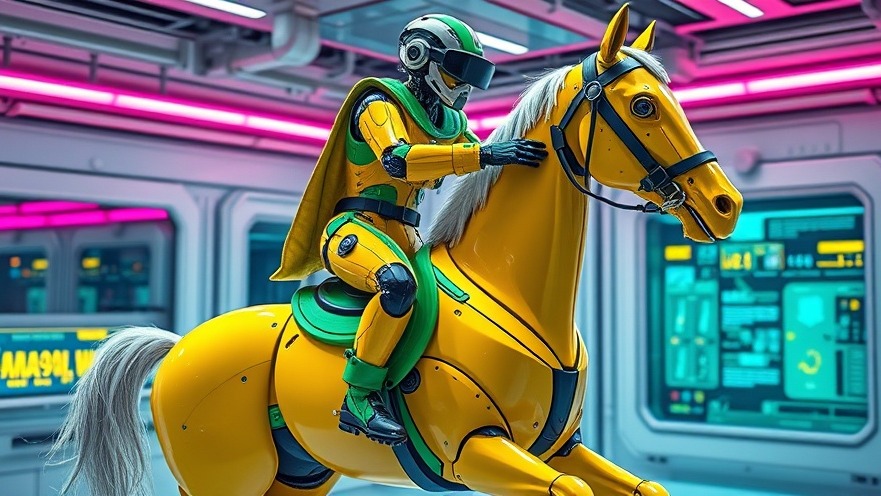
A Horse’s Touch: A New Era in Robotic Therapy
The quest for interactive robots that surpass mere companionship is gaining momentum, with researchers at the University of Bristol looking to horses as a model for designing emotionally intuitive machines. Instead of being obedient companions, future robots could serve as active partners, mirroring the empathetic responses shown by therapy horses in equine-assisted interventions (EAIs). These advancements in robotic emotional engagement reflect a shift in how we envision human-robot interactions, especially in therapeutic settings.
Understanding Emotional Responses: The Horse’s Role
In EAIs, horses act as 'living mirrors' that respond to human emotional states. When an individual is tense, the horse shows resistance, prompting the person to adjust their demeanor. This feedback loop not only aids in emotional regulation but provides practitioners with insights into their clients’ states of mind. Researchers argue that robots destined for the therapy space must embody similar capabilities, moving beyond the simplistic notion of providing comfort to actively encouraging emotional awareness.
Transforming Robotic Interventions
By incorporating principles from EAIs, researchers outlined a visionary prototype for therapeutic robots that require emotional management from users before they engage. Just as individuals must calm themselves to interact effectively with horses, these robots could similarly promote self-regulation. Such evolutionary practices could fundamentally alter the landscape of robotic therapy, creating machines that support personal growth and interpersonal capabilities.
Potential Impact on Human-Robot Dynamics
This forward-thinking approach could lead to exciting innovations across numerous fields. From education to workplace environments, the ability of robots to foster emotional intelligence could enhance social skills development and stress management strategies. As industries integrate these advanced technologies, we may see a significant evolution in how humans relate to machines, positively impacting mental health initiatives globally.
The Ethical Dilemma: Machines vs. Living Beings
Nevertheless, the rise of emotionally responsive robots raises profound questions about replacing sentient beings in therapeutic contexts. Can a robot construct the same depth of trust and empathy that defines human-animal interactions? The ethical implications surrounding this question are significant as society navigates the balance between technological advancement and maintaining genuine emotional connections.
Diving into the Future of Robotics
As we stand on the brink of revolutionary changes in the world of technology, understanding the forward trajectory of robotics is crucial. How can robots not only assist us in our daily lives but also help foster emotional resilience? The journey into crafting robots inspired by the intricate emotional landscapes of therapy animals is just beginning. Researchers advocate for further exploration into emotional sensing, machine learning, and movement dynamics to create robots that can genuinely enrich human experiences.
 Add Row
Add Row  Add
Add 




Write A Comment